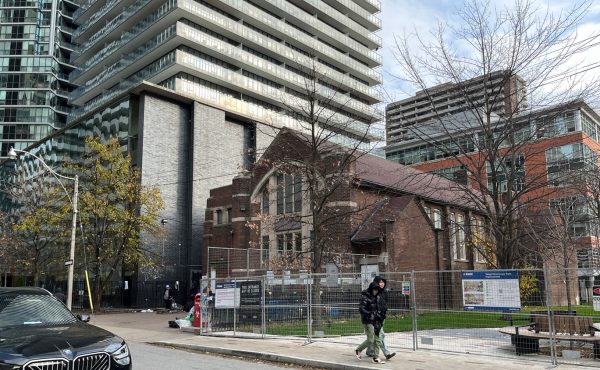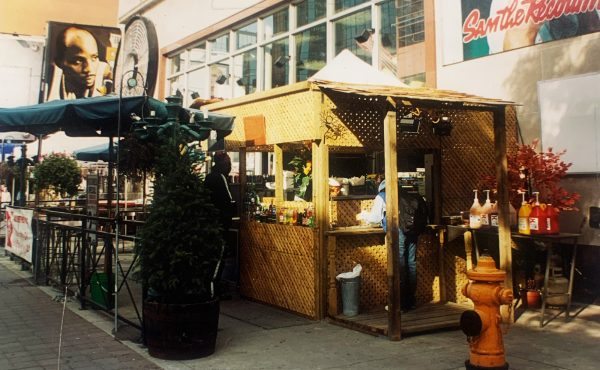
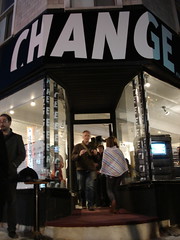 ED: Spacing is pleased to publish this guest post & interview by Montreal writer Alexandra Redgrave.
ED: Spacing is pleased to publish this guest post & interview by Montreal writer Alexandra Redgrave.
This year marks the tenth anniversary of interventionist art collective Action Terroriste Socialement Acceptable (ATSA), the brainchild of dancer Annie Roy and visual artist Pierre Allard. Over the past decade, they have been redefining Canadians’ understanding of the urban landscape, changing the way we interact with our cities through public art. ATSA’s work is equal parts cheeky (Warhol’s iconic Brillo boxes are taken out of the museum and put back into a laundromat for free public use), and radical (“civilian tickets†have been handed out to the owners of gas-guzzling SUVs across the country). Torontonians will remember their bombed-out SUV parked in Dundas Square in 2005. Last month, the collective opened Change, a temporary store that will serve as retrospective and “marketing guinea pig†until it closes on December 20th. For those who can’t make it to the physical location (4351 Saint-Laurent Blvd in Montreal), Change has a permanent home on the web.
Alexandra Redgrave: Coming from your backgrounds in dance and cinema, how did you and Pierre start ATSA?
Annie Roy: When we first met there was an energy between us that sort of exploded into a series of ideas and gave us the courage to go further, bigger, and more spectacular. ATSA didn’t take off right away, though. For our first meeting, we made labyrinths out of dead leaves on the mountain and watched to see if people would walk through the sculpture, around it, or jump right into it. Even though our resources were limited, there was already the idea of putting something in the urban environment and having fun with it. Later, as a couple, we started talking about the future and having children. We wanted to take ten or so years of aesthetic baggage and turn it into something useful for our society.
What really pushed us to start ATSA was while we were watching the news one night. A report stated that the Maison du Pà¨re [a refuge for the homeless] needed 107 pairs of socks, and right after, the announcer said that Canadian banks were making millions of dollars in profit. As artists—and citizens—it was a great indignation. The symbolism was very strong for us. So we put our heads together and made a debit machine that dispensed warm socks, calling it a “Banque à Bas†or “Sock Bank.†We illegally put it in front of the Musée d’art contemporain de Montréal, and that’s when our whole “terrorist†strategy came about. The media didn’t know who we were, and the name was very shocking and provocative at the time. It was an artistic form of terrorism, in the sense that it was a work of art that exploded in the urban environment. Of course, it’s not real terrorism at all, but rather, a sublimation of violence, an aesthetic and civilized gesture.
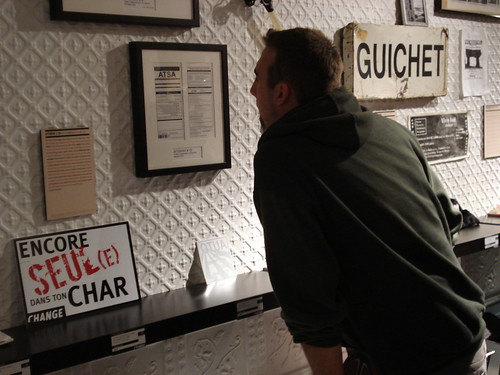
A socially acceptable gesture.
Exactly. For me, the name is almost the definition of art. With art, there is an inner force that must come out, but it materializes with beauty. Art is a kind of diversion from the violence that is within us all. We are submerged in information, and so [as artists] we just deliver the images and strong symbolism that disturbs us. We hope it will ultimately be universal, but an artist inevitably touches on certain issues. Each work has a militant aspect because there is a message behind it that is put forward to the media.
It’s perhaps easier to get a message out quickly through the media rather than, say, a museum. How have art institutions reacted to your work?
Well, I think we’ve succeeded in creating our own brand. Mass media isn’t the same now as it was ten years ago, at least in Montréal. There will always be people in the art world who say, “Well, it’s not true art.†But I think on the contrary, real art is using whichever means available to express that which disturbs us about our society.
Do you still feel like you are the underdogs?
We always will be in some sense, and that’s okay. On one side we have exposure, but on the other side we can be misunderstood. After being around for ten years, I think it’s normal that we are seen from different points of view. In any case, the trademark or brand we have created is secondary to the cause. People might know of the State of Emergency events or the Change store, but not necessarily have heard about ATSA. The biggest challenge for any artist is to endure, evolve, and continue to be active. You have to go with your instinct; otherwise you won’t be authentic. We have a route—an objective—to follow, and it has become our life project, so we look at everything on the long term.
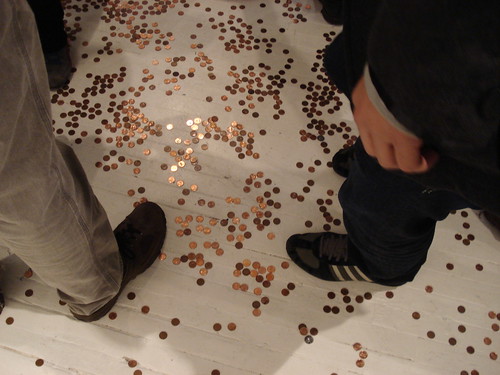
Change seems to be, well, a change from your previous work.
Ah, but it’s so connected! Imagine, we started with the Sock Bank, focusing on wealth and waste, and now, ten years later, we’re back where we started. In light of the economic crisis, entering a store where you’re asked to throw your small change onto the floor is quite a paradox. I find the image very strong. Sometimes you create something and only realize after what you have made. Throwing away your money could be associated with making a wish in a fountain; the action is just as hopeful as it is despairing.
We make works of art that are ephemeral, and so there was a need—a necessity even—for us to leave something concrete. The store is a means for us to leave a trace. When people take an object home, they are giving it new life. They are reappropriating a work that already has meaning. Over-consumption, big shopping malls, mass brands, objects without a soul made by an anonymous person… we don’t know what we’re buying. Having a little store that is entrepreneurial, cultural, and community-based really means something in our consumerist society.
Now that your work has been made into a series of objects that is available for purchase rather than to experience as one-offs, has the ATSA mandate changed?
The way we set up the Change online store was to go well beyond the object itself. When you click on one of our products, you can see a description and of the project behind it along with a video of the installation. You experience the actual making of the object and it becomes much richer because you know why it exists. When people buy a product they become ATSA spokespersons. For example, the Attack keychain [a beaten up toy car] is quite a strange object. If you pulled that out of your pocket, someone would probably ask where you got it, and you would explain what it represents, the ATSA project that inspired it, and so forth. The discourse is yours. And, of course, you’re supporting us. It’s very important that we, as a society, encourage art that goes beyond entertainment.
This year’s State of Emergency (an “urban refugee camp”) will be held on November 26th-30th in downtown Montreal.
Alexandra Redgrave is a freelance writer living in Montréal, where she keeps her eye out for impromptu art explosions.

